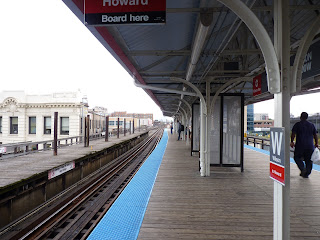Spectacular indian summer this weekend in Detroit with no time for birding on Saturday but on Sunday morning, for the third weekend in a row, I spent a couple of hours at Belle Isle. This is sparrow season and, including towhees and juncos, I saw eight species - chipping, song, white-throated, white-crowned, field and one fox (Passerella iliaca) (no photo).
Three small flocks of Chipping Sparrows (Spizella passerina) were seen around the park.
October 10th is the typical departure date for Swainson's Thrush (Catharus ustulatus) in this area of Michigan, so it's possible that this may be the last I see until next spring.
Belle Isle nature trail is overrun with these noisy creatures, Eastern Chipmunk (Tamias sp.). Good thing they're cute, right?

Readers of my blog know that I am not shy about including less than ideal photos. I would prefer not to, but the combination of birding, photography and writing a blog sometimes make this necessary. I offer the photo above as support. I saw two Winter Wrens (Troglodytes hiemalis) for the morning and after doing my screech whistle and a little soft pishing I coaxed one to perch on the small limb for a momentary photo opportunity. I missed. Slowness is not allowed in the presence of a Winter Wren. Note above Winter Wren's new latin name. Thanks to the recent AOU split, Troglodytes troglodytes is now given to the Eurasian Wren and Pacific Wren is now Troglodytes pacificus. Since T. hiemalis and T. pacificus ranges overlap, it should be fun trying to tell them apart in some parts of the country, although Sibley's illustrations reveal distinct variations. I guess this also means that my life list is longer by two, since I have seen all three of these new birds.

Golden-crowned Kinglets (Regulus satrapa) were still around in good numbers, but nothing like their omnipresence of the prior Sunday. This morning I saw more Ruby-crowned Kinglets (Regulus calendula).
The photos above and below may be the best I have ever taken of a Song Sparrow (
Melospiza melodia). For such a cooperative bird, I certainly have been nixed more often than not. I was very pleased with these.
I was first alerted to the presence of this single White-crowned Sparrow (Zonotrichia leucophrys) by its brief song. I later found a few others in another area of the park.
White-throated Sparrows (Zonotrichia albicollis) were present in huge numbers and, as usual, were typically uncooperative for photos. This bird flew to this low perch and then proceeded the preen vigorously. I took several photos with only a couple keepers. While taking the photos, I was struck by the nearly perfect lighting.
After walking the nature trail, I went to an area on the other side of the playing fields that is ignored by most birders, including myself, but should not be. Here I found more of all of the sparrows noted above and added junco and Field Sparrows (Spizella pusilla). I think of Field Sparrow as a good bird for Belle Isle.
Eastern Towhees (Pipilio erythrophtalmus), all females, were present throughout the woods around the nature trail, but this bird continues to be a nemesis when it comes to getting a photograph.
Sparrows are amongst my favorite birds so this was a fun morning.



































